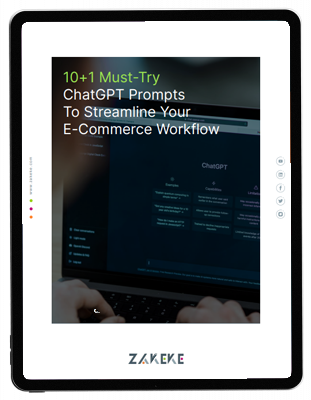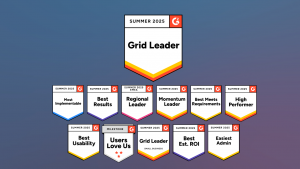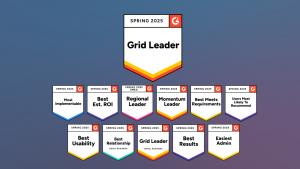In today’s e-commerce landscape, advertising plays a crucial role. Enhancing online sales and amplifying performance through e-commerce advertising stands as the ultimate goal.
This article outlines 10 effective strategies for achieving success with e-commerce advertising. It delves into the world of online advertising, starting a journey of discovery and learning.
Your adventure begins now!
The Evolution of E-commerce Advertising
Gone are the days when e-commerce advertising was as simple as setting up a banner ad and waiting for the sales to roll in. With the rise of AI and other tech advancements, e-commerce advertising has morphed into a complex creature that requires a strategic approach. But fear not, we’re here to help you tame that creature.
How to Advertise E-commerce? 10 Effective Strategies
Strategy 1: Harnessing the Power of Social Media
Social media isn’t just for sharing cute cat videos and drool-worthy food snaps anymore. It’s become a powerhouse for e-commerce advertising. Whether it’s Facebook, Instagram, or TikTok, each platform offers unique ways to reach your target audience. For instance, Instagram’s shopping feature allows users to purchase products directly from your posts. Now, isn’t that neat? And with TikTok’s innovative features, like the TikTok Galaxy Gift, brands can engage users in exciting and interactive ways, driving sales and brand awareness.
But it’s not just about posting; it’s about engaging. Respond to comments, share user-generated content, and create a community around your brand. Remember, social media is a two-way street. The more you engage with your audience, the more they’ll engage with you.
Strategy 2: The Rise of Video Ads
If a picture is worth a thousand words, then a video is worth a million. Video ads are all the rage in e-commerce advertising, and for good reason. They’re engaging, informative, and let’s face it, way more fun than reading a block of text. So, why not give it a shot? Create a product demo, a behind-the-scenes tour, or even a fun unboxing video.
And don’t forget about platforms like YouTube. With its vast audience and powerful targeting options, YouTube can be a goldmine for e-commerce businesses. Just make sure your videos are high-quality, engaging, and optimized for search.
Strategy 3: Optimizing Facebook Ads
Facebook Ads are like a goldmine for e-commerce businesses. With the right targeting and creative strategy, you can reach millions of potential customers in no time. But remember, it’s not just about reaching people; it’s about reaching the right people. So, make sure to use Facebook’s detailed targeting options to reach your ideal audience.
And don’t forget about ad optimization. Test different ad formats, creatives, and bidding strategies to find what works best for your business. Remember, the key to successful Facebook advertising is continuous testing and optimization.
Strategy 4: Leveraging Email Marketing
Email marketing might seem old school, but it’s still one of the most effective e-commerce advertising strategies out there. It’s all about building relationships with your customers and keeping your brand top of mind.
So, don’t just send promotional emails. Send valuable content that your customers will appreciate. And don’t forget to personalize your emails. Trust us, your customers will notice.
But it’s not just about sending emails; it’s about tracking your performance. Use email marketing platforms to track your open rates, click-through rates, and conversions. This data can help you optimize your emails and improve your ROI.
Strategy 5: Exploring Influencer Marketing
Influencer marketing is like word-of-mouth advertising on steroids. By partnering with influencers in your niche, you can reach a wider audience and build trust quickly. Plus, it’s a great way to create authentic content for your brand. Just make sure to choose influencers who align with your brand values and have a genuine connection with their followers.
And remember, influencer marketing is not just about one-off promotions. It’s about building long-term relationships with influencers and their audience. So, provide value to the influencers, engage with their audience, and make it a win-win situation for everyone.
Strategy 6: Mastering SEO
Search engine optimization (SEO) might seem intimidating, but it’s crucial for your e-commerce business. By optimizing your website and content for search engines, you can attract high-quality traffic and boost your visibility online. So, do your keyword research, optimize your product pages, and create valuable content that your audience will love.
But SEO is not just about keywords; it’s about providing a great user experience. Make sure your website is fast, mobile-friendly, and easy to navigate. Remember, a happy user is a loyal customer.
Strategy 7: Utilizing Retargeting Ads
Ever visited a website, and then got ads for that website everywhere you went online? That’s retargeting in action. Retargeting ads allow you to reach people who have already interacted with your brand, making them more likely to convert. So, don’t let potential customers slip away. Use retargeting ads to remind them why they should choose you.
And don’t just retarget everyone; segment your audience based on their behaviour. For example, you can retarget people who added products to their cart but didn’t complete the purchase. By showing them personalized ads, you can increase your chances of converting them into customers.
Strategy 8: Diving into Data with Google Analytics
Data is your best friend in advertising for e-commerce. With tools like Google Analytics, you can track your advertising performance, understand your audience better, and make data-driven decisions. So, don’t just guess what’s working. Dive into the data and let it guide your strategy.
But remember, data is only as good as your ability to interpret it. So, take the time to learn how to use Google Analytics effectively. Understand what each metric means, set up custom reports, and track your key performance indicators (KPIs). This will help you make smarter advertising decisions and improve your ROI.
Strategy 9: Creating Engaging Content
Content is king in e-commerce advertising. Whether it’s blog posts, videos, or social media posts, engaging content can attract customers, build trust, and drive sales. So, don’t just sell products. Tell stories, provide value, and create content that your audience will love.
But remember, creating content is not enough; you need to promote it. Use SEO, social media, email marketing, and other strategies to get your content in front of your target audience.
And don’t forget to engage with your audience. Respond to comments, ask for feedback, and encourage discussions. This will help you build a community around your brand and boost your engagement.
Strategy 10: Experimenting with Emerging Platforms
The digital world is constantly evolving, and so should your e-commerce advertising strategy. Don’t be afraid to experiment with emerging platforms like TikTok or Clubhouse. You never know, you might just find your next big opportunity.
But remember, experimenting is not about jumping on every new platform or trend. It’s about finding what works for your business and your audience. So, do your research, test different platforms, and measure your results. This will help you make informed decisions and stay ahead of the competition.
Unraveling E-commerce Advertising: Your Questions Answered
What are the most effective e-commerce advertising strategies?
The most effective e-commerce advertising strategies include social media advertising, video ads, email marketing, SEO, retargeting ads, influencer marketing, and data analysis. However, the effectiveness of each strategy can vary depending on your business and target audience.
How can I measure the success of my e-commerce advertising?
You can measure the success of your e-commerce advertising by tracking key metrics like click-through rate (CTR), conversion rate, return on ad spend (ROAS), and customer acquisition cost (CAC). Tools like Google Analytics can help you track these metrics.
How can I increase the ROI of my e-commerce ads?
You can increase the ROI of your e-commerce ads by targeting the right audience, creating engaging ad creatives, optimizing your landing pages, and continuously testing and tweaking your ads based on performance data.
What role does AI play in e-commerce advertising?
AI plays a crucial role in e-commerce advertising. It can help businesses analyze large amounts of data, predict customer behaviour, personalize ads, and automate repetitive tasks. With AI, businesses can make smarter advertising decisions and improve their ROI.
Conclusion
E-commerce advertising might seem like a daunting task, but with the right strategies, you can conquer the digital world and boost your results.
So, take these strategies, put them into action, and watch your e-commerce business soar to new heights. Happy advertising!

Aryan Shukla
E-commerce Growth Marketing Expert – The Frame Agency
Aryan, an E-commerce Growth Marketing expert and entrepreneur, has marked his success with leading brands and his ventures, The Frame Agency and MyStory Public Relations. His expertise lies in Email Marketing, SEO, Omnichannel marketing, and AI automation, which empowers businesses in the e-commerce sector.















